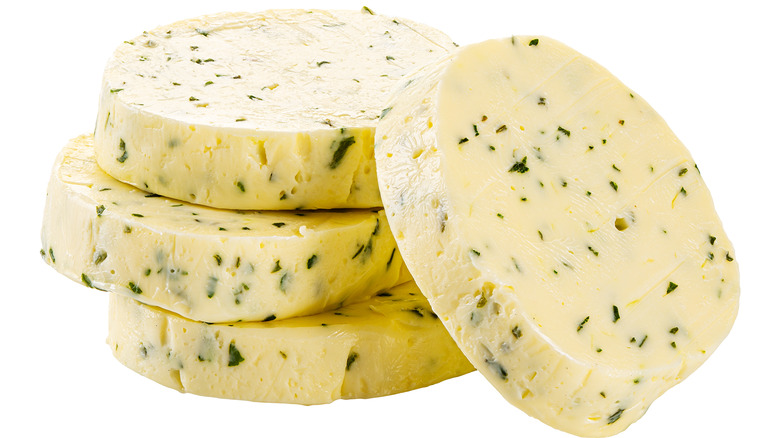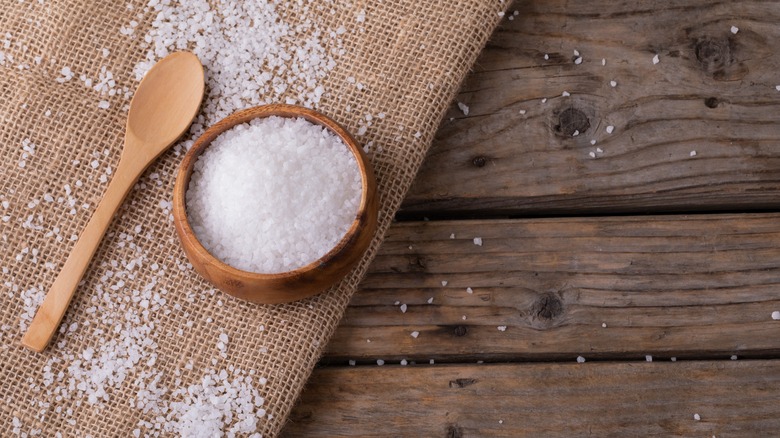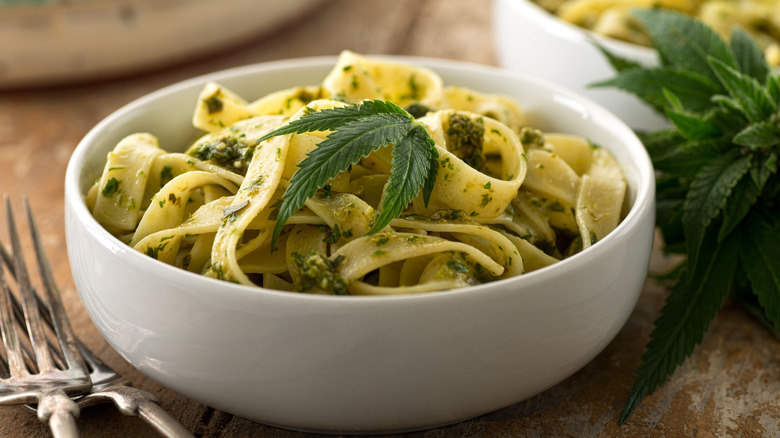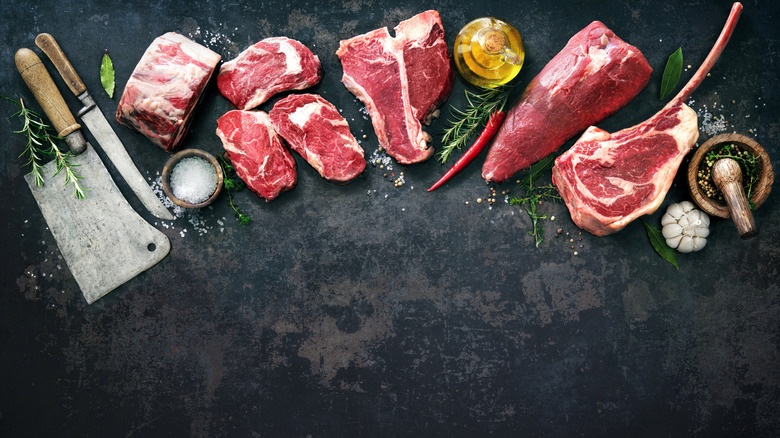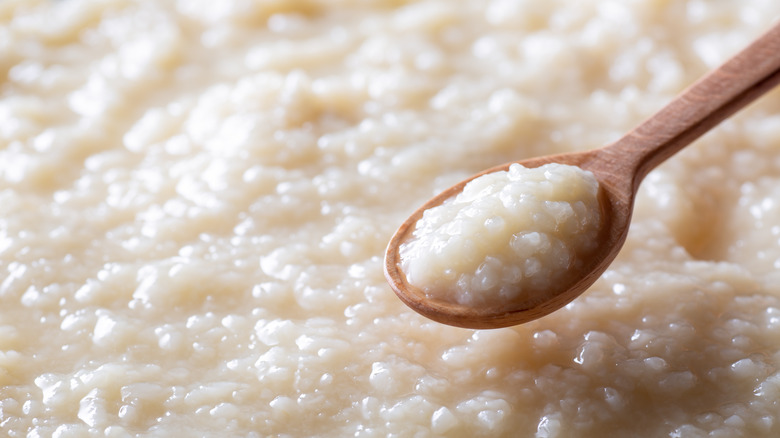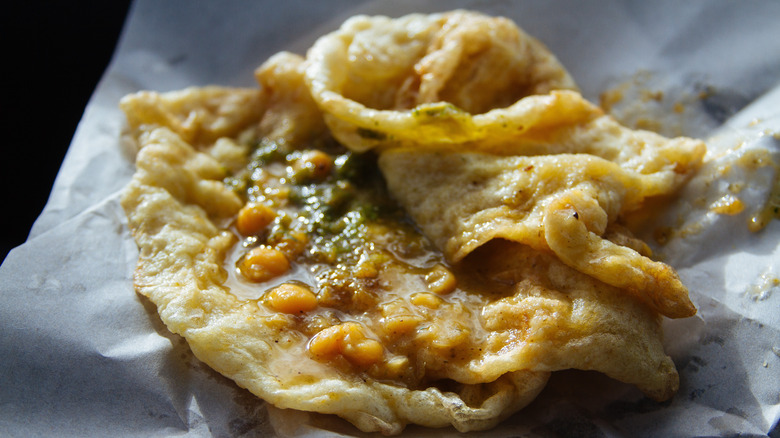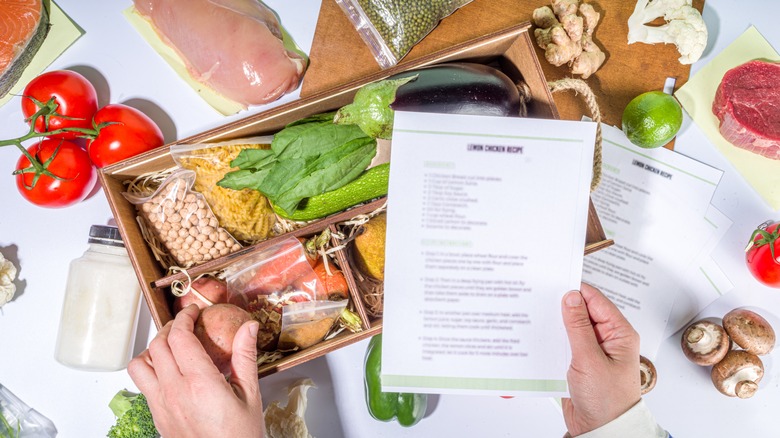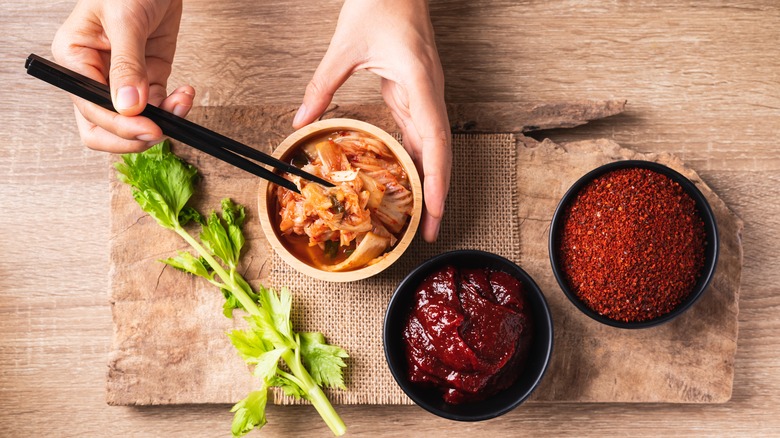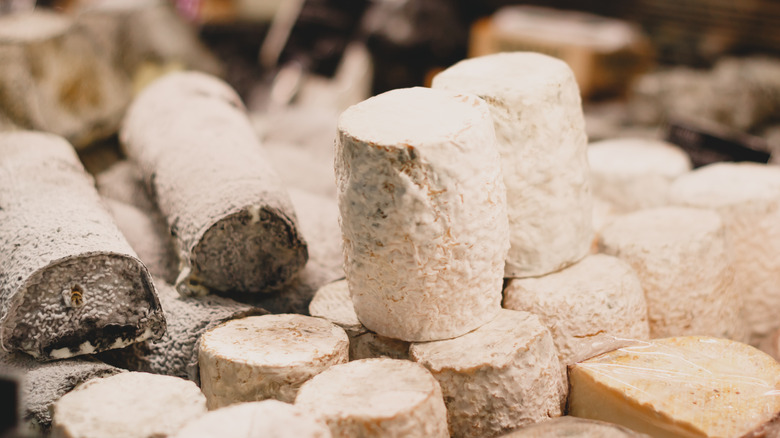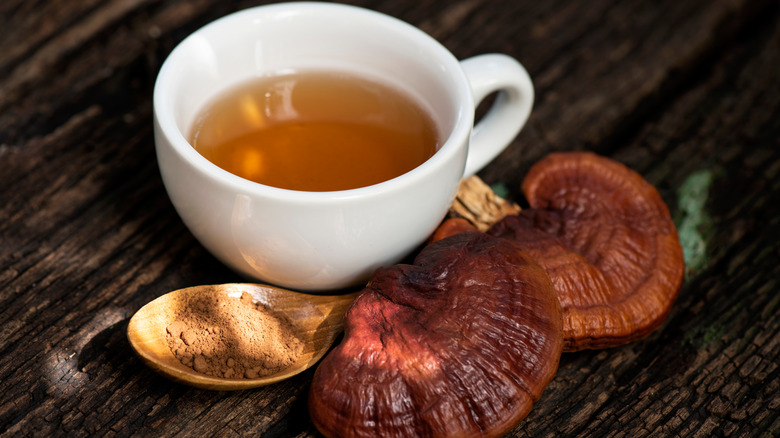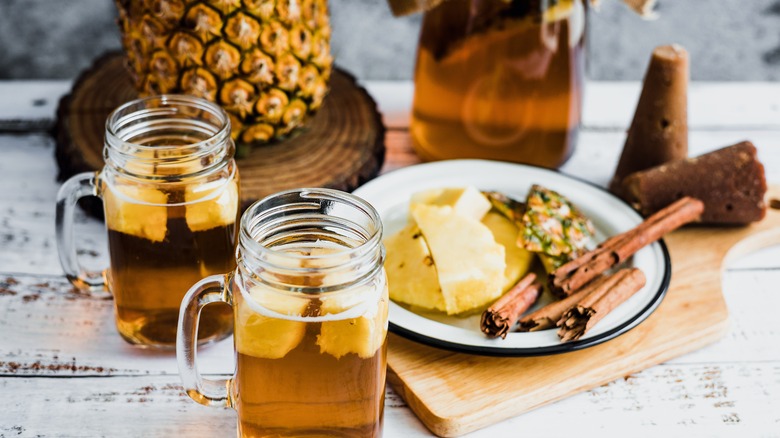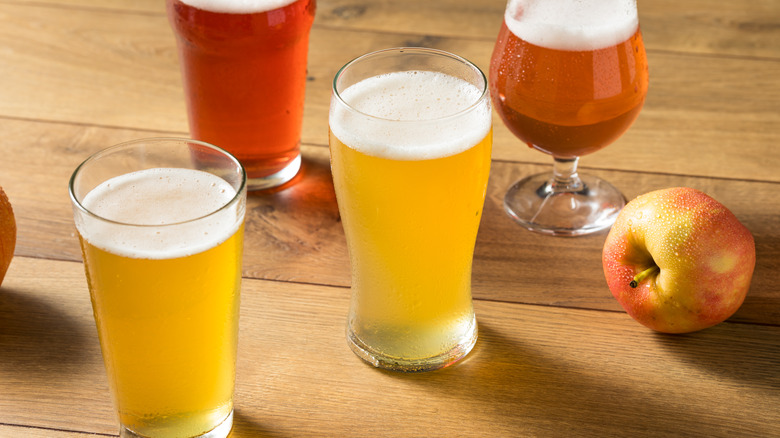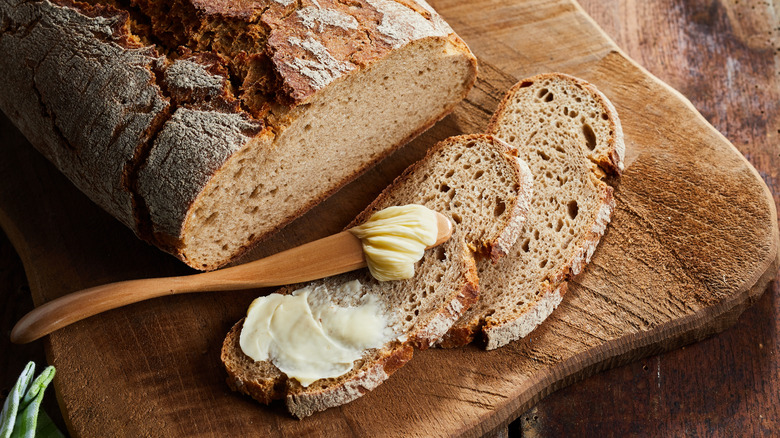17 Food And Beverage Trends To Look For In 2023
We may receive a commission on purchases made from links.
We have ridden the trend waves of glitter coffee, cronuts, and TikTok feta pasta. Each year new culinary fads take over the zeitgeist, for better or worse, and only the worthy ones become part of our gastronomical lexicon. There's no denying the influence of TikTok and other social media platforms on food trends. But, the fact that the hospitality world opened back up after over two years of limits and closures has also contributed to many of our current culinary movements. The collective went from naming sourdough starters and growing indoor herb gardens to seeking out adventurous ways of dining, then traveling far and wide in search of authentic regional cuisine.
We have put together a list of trends to look for in the food and beverage space in 2023. We also sought out foods trends that will stand the test of time and are less likely to go the way of congealed foods and fat-free potato chips made with Olestra — we would love to see a "Chopped" basket include any of these trends.
Artisanal butter
Did you ever think you would be spreading butter over a cutting board to impress dinner guests? Well, here we are. While the trend of artisanal butter boards might not stick around, focusing on quality butter will. Consumers are stepping up their butter choices by buying international butters, flavored and compound butter, and butter from grass-fed cows with a focus on the quality and purity of the grass.
European butters have 82-84% butter fat, compared to 80% in American butter. It seems like a negligible amount, but the difference is noticeable. Fat is a flavor carrier and coats the palate thoroughly. Plus, these butters are cultured, so they exude a tanginess that American butter lacks. Lewis Road Creamery in New Zealand prides itself on its bright yellow butter from the cow's organic grass-fed diet. The butters are velvety smooth because they are made using the traditional Fritz churn process.
American butter companies upping the ante includes Minerva Dairy, whose plain, sea salt, garlic herb, and maple syrup butters are slow-churned, Amish-style, and contain 85% butter fat. Golden Steer Steak Company began making specialty compound butters such as Maitre D' Butter (garlic and herb), De Jonghe (garlic with a hint of mustard), and Sweet Holiday Butter (pecan and apple). Rastelli's and Churn Foods' lines of specialty butters are also incredibly drool-worthy.
Boutique salt
Opting for premium staples extends beyond butter. We are seeing essential ingredients getting luxury treatment: Salt has become a choice souvenir to bring home from vacations near salt flats. For a taste of Sicily, Bona Furtuna makes an organic line of harvested salts and ingredients like truffles, Sicilian lemon, and basil. The Kalahari desert is home to coveted Oryx Desert Salt harvested from an underground lake.
U.S. companies are also producing fantastic salt blends, many of them with a clean-ingredient focus. Creations By Kai makes California citrus, cajun and chicory, and five-spice habenero and ginger blends. Florida Pure Sea Salt makes infused salts featuring garlic, a (vegan!) maple bacon, lime citrus, or herbs de Provence.
The Momofoku restaurant brand added to its home chef ingredients with a Seasoned Salt Trio, using umami-rich ingredients in each. For creative salts, Keep It Savory makes small batch salts with unique flavors like Thai ginger lemongrass, hops flower, and shiitake cremini. Have you ever considered pairing specific salts with wine? Skordo recently released a range of salts to complement your glass of vino.
THC and CBD culinary products
As THC gains traction becoming legal, and CBD loses stigma, we are seeing more and more products made with these healing compounds. Major corporations have entered the culinary cannabis scene, including Nestle, Kraft Heinz, Molson Coors, Moosehead, Carl's Jr., and Seneca Foods. You can grab a CBD coffee or sparkling water at just about any coffee shop these days, and THC products are not too far behind.
Companies like Cannadish offer cookbooks for home chefs and products to help you make your own gummies. Pantry Food Co's features infused olive oils. Potli makes CBD-infused honey, chili oil, and apple cider vinegar. You can even find pasta by Last Leaf. It is truly a renaissance period for products such as these.
Making your own THC or CBD food can seem daunting, but companies like LĒVO make it safe and easy. A brand recently came out with a cannabis infuser called LĒVO C that can make 1 liter of THC and CBD oils or butter at the touch of a button. This way, you can make any meal a little more relaxing at home. There are plenty of cannabis cookbooks out there (some with great names like "Bong Appetit") that you can use along with infusers.
Yaupon
This American holly bush herb is loaded with caffeine. It grows easily across the Southeast, from the Gulf Coast to Central Texas, and is considered a sustainable ingredient. Indigenous Americans have been making herbal teas with Yaupon for eons, and it is picking up steam nationwide recently. It has a fruity and earthy flavor, much like a weak orange pekoe tea. The tannic structure is very mild, so over-steeping is not an issue. BBC Travel states that the caffeine and other stimulants called xanthines, theobromine, and theophylline release slowly so that there is none of the overstimulation that one might get from a shot of espresso. The effect on the stomach is also mild.
Yaupon is poised to be a versatile ingredient for mental lucidity and energy and will likely be found in everything from cocktails, mocktails, kombuchas, and health tonics, in addition to traditional tea. It might find its way onto plates as well.
Heritage meats
Consumers are eschewing mass-produced livestock for many reasons — the questionable factory farm process and the "meh" taste of meats made in this way being the top two. However, before this became the norm, American farms raised a wide variety of farm animal breeds that thrived in their specific climate and environment. Some that might be familiar are red bourbon and Narragansett turkeys, dark Cornish chicken, buff geese, Berkshire pork, Tunis lamb, red poll beef, and American bison.
According to Mother Earth News, having almost gone extinct, a recent resurgence in heritage seeds and animal breeding has brought back many of these sought-after animals. You can expect less excess fat, a tighter muscular grain, and exceptional flavor from heritage meats. Companies like Heritage Foods, D'artagnan, Heritage Meats, and Grassland Beef ship nationwide. Some of these more prominent companies own farms and others have independent farms like Heritage Haus Farm in Berkshire, NY, and All One One All (AOOA) Farm in the Hudson Valley to thank for their dedication to better food.
Koji
Fermentation, in general, has soared in popularity over the past few years, and koji is the latest darling on the fermentation scene. Koji is a Japanese seasoning that is made by fermenting rice, barley, or soybeans. It is the starter base for miso, sake, and soy sauce, so clearly, it is an essential staple in Japan. The result of this type of fermentation brings up gorgeous umami flavors that will elevate any meal. So many snacks, dishes, and beverages can benefit from koji.
Takamine Japanese whisky has an eight-year-old koji spirit. Spirit Almonds have a koji salt almond snack, and amazake is a creamy koji rice drink you can make or buy. There are a plethora of recipes to try that incorporate koji. To get started, you can buy your own starter culture, or buy premade koji by Cold Mountain from MTC Kitchen or Marukome. Then, try your hand at cooking with koji.
Trini food, products, and restaurants
You may have noticed more Caribbean restaurants popping up in your neighborhood, especially with a Trinidad and Tobago focus. The Caribbean trend is coming in hot in 2023, and Trini food is leading the way. According to Life in Trinidad and Tobago, Trinidad is home to a large Indian population, so there are a lot of foods that cross both of those cultures. For example, a popular appetizer (apps are called "cutters") is geera pork — "geera" being the Hindi word for cumin. Other Indian-influenced dishes are tomato choka, pholourie (split pea flour fritters), and aloo pies (spiced mashed potato pie). More Caribbean beach vibes are found in "bake and shark" (fried shark and coconut bread sandwich), or crab and dumpling (curried crab and dumpling soup).
The food you'll be hearing most about is doubles, which are curried, chickpea fried dough sandwiches that are commonly served in stands all around Trinidad and Tobago — and are soon to be coming to a stand, food truck, or restaurant near you. For Trini snacks, look to Caribshopper or head to Amazon for pepper sweet pommecythere. Do yourself a favor by snaggin a bottle of Bertie's hot sauce.
Time cutting and pre-prepped meals
Gone are the days when we had all day to cook and experiment with different dishes. Not that we miss lockdown, but cooking elaborate meals after being back in the office doesn't appeal to anyone. We are going to see a lot more one-pot, "sheet pan," and batch cooking meal prep, as well as meal subscription popularity. Additionally, pre-prepped veggies, salads, and meal delivery kits will continue to grow, according to Globe News Wire. These are a far cry from the TV dinners of yore — the pre-prepped space is much healthier, fresher, and yummier.
When looking for oven-ready dinners, Rastelli's offers everything from crab cakes to beef Wellington. There are several options for home-chef experiences where everything is portioned and prepped. Goldbelly offers meal kits from celebrity chefs delivered to your door. Hungryroot is health-focused. There are so many options for meal delivery kits for every niche.
Maybe you just want to make things easier on yourself with pre-made sauces? Haven's Kitchen has an array of bangin' sauces to choose from. Fresh Express can be found in most supermarkets and online for fresh salads, toppings, and dressings that simply need to be tossed. If you prefer to do the prep yourself, but still want to cut down on time and cleanup, try a one-sheet pan recipe for dinner.
Steamed foods and home steam ovens
Air fryers walked so home steam ovens could run. Taking healthy cooking one step further, steamed foods are the latest trend to watch. Steam ovens, also called combination or smart ovens, are said to preserve the moisture and nutrients of your meat or veggie while cutting out the need for oil or butter. Other (less expensive) ways to steam your meals are rice cookers with steamer sections or simply steaming food over a pot on the stove. Products like microwave steam bags are also on the rise. Companies like Bird's Eye make simple microwavable vegetable bags in a variety of flavors.
Make sure to avoid commons mistakes while steaming your meals, such steaming for too long, and don't be afraid to find new ways to use your vegetable steamer. There are plenty of meals to make at home, such as steamed black cod with sweet potatoes recipe, a simple steamed broccoli recipe, and steamed beef dumplings.
Korean condiments
Kimchi has been in-demand for a long time now, but finally, other Korean delicacies are playing a starring role — especially Korean condiments. Gochujang is a fermented condiment that adds spice, umami, and a tangy sweetness to any dish. It is made from red chili peppers, glutinous rice, fermented soybeans, and salt. Fermentation allows the glutinous rice to convert into sugars, adding a little sweetness. Doenjang is Korea's answer to miso and a fermented soybean paste that gives your dish a rich, umami flavor. Ssamjang incorporates the kick from gochujang, along with sesame oil, garlic, green onions, brown sugar, and doenjang (another type of soybean paste) for a potent dipping sauce. For those dank and delicious black noodles, you'll need chunjang, a black bean sauce made from fermented soybean with a bitter and salty edge. Chamgireum is a toasted sesame oil usually used for drizzling.
Use these to punch up your regular meals or make your own classic Korean recipes, such as Jjajangmyeon black bean noodles, a beef bulgogi recipe, or a vegetarian bibimbap recipe.
Budget grocery stores
As the cost of groceries continues to rise with inflation, consumers are opting for budget-friendly grocery stores. Staples like eggs, milk, and bread have jumped, but some grocery store models mitigate costs to consumer. Aldi can keep prices low in a number of ways, such as low operating costs, high margins through private brands, and limited SKUs. According to The Strategy Story, this all factors into how the chain can offer groceries at a lower cost than Walmart. Customers love Aldi for the store's organization and its array of international products. Additionally, buying in bulk for cheap can be done sans membership fees. Lidl in the U.S., another German supermarket import, has a similar business model to Aldi and customers love it for similar reasons.
If you like treasure hunting for extreme discounts, see if there is a Grocery Outlet near you. Grocery Outlet prices tend to be anywhere from 40% to 70% lower than other stores. This is done in a few ways: buying surplus goods and not being beholden to the same inventory being the biggest. So, you might not always find the exact thing you are looking for, and products might be nearing the expiration date, but it's a place to get steep discounts on good food. They even have an organic line called Nosh. Of course, buying in bulk is an excellent way to save if you are smart about it. Costco, Sam's Club, and BJs are great options if going that route.
Goat milk dairy
The anti-cow milk trend doesn't just mean non-dairy. Goat's milk lacks the enzyme that affects lactose intolerant people and boasts tons of health benefits. According to Grand View Research, goat milk products are anticipated to reach USD 17.90 billion globally by 2030. The demand for goat milk products, such as chevre, butter, cheese, flavored milk, and yogurt, is poised to increase sales by 4.6% in one forecast period, according to the institute. We agree with the forecast because of the benefits of goat cheese like a longer shelf life, nutritional benefits, and easy digestibility. Many infant formulas now offer goat milk lines. We foresee canisters of goat milk next to the oat and almond milk at the café very soon.
Goat milk can also be a great option to cook with, giving a dish a tanginess along with nutrients. There are so many recipes using goat dairy, including spring quiche and nduja cheese breads with whipped goat cheese. Plus, goat milk can even aid in keeping your turkey burger juicy.
Functional foods
Functional foods are perhaps the largest category in our trends list because they intersect many sectors: tonics, chocolates, gummies, teas, smoothies, and snacks. Many products like ice cream with adaptogens or superfood mushrooms are said to promote health, mental clarity, energy, or a sense of calm. Many brands have launched mushroom coffee for energy, focus, and even digestion. We can expect to see more functional ingredients incorporated into everyday products this coming year.
Alice Mushrooms are decadent, functional mushroom chocolates that contain adaptogens and nootropics. Alice's "brainstorm" chocolates contain lion's mane and cordyceps mushrooms, guarana, and phosphatidylserine for energy and focus, while the "nightcap" product uses reishi, magnesium, zinc, chamomile, and L-theanine for calm and sleep better. To start the day, Laird Superfoods uses functional ingredients in the form of coffee creamers, coffee, drink mixes, and snacks. For other functional bevvies, there is Veerfar, which is a kelp-based functional regenerative supplements, such as "supergreens" and "morningboost" packed with marine algaes and antioxidants.
Neuro is an enhancement beverage that targets different health initiatives like sleep, focus, and stress reduction. Instead of a cocktail at night, consider a good-for-you De Soi, a non-alcoholic apéritif from Katy Perry. The nonalcoholics drinks contain botanicals and adaptogens like yuzu, lemongrass, L-theanine, reishi, and ashwagandha.
Adventurous dining
After two years of cooking at home, everyone is relishing the fact that indoor restaurant dining is back. Additionally, the shake-up the world experienced is driving a trend of experiential dining, as people feel the impulse to want to live life to its fullest. As part of the top 2023 food trends predicted, a massive rise in experiential dining is expected in the coming year. Think underwater restaurants, dinner theater restaurants, and many more kooky ways to enjoy a meal.
A hard pass for some [raises hand] and an exhilarating experience for others, diners can have Dinner in the Sky in Belgium at a table 150 feet above the ground, held by a crane. In the Philippines, you can enjoy deep-fried bananas in a literal waterfall at Labasin Waterfall Restaurant. Eat at an underwater restaurant at Conrad in the Maldives. At Under in Norway, you can eat Michelin-starred cuisine underneath the freezing cold waters of the southern coast. As if we didn't get enough of eating in the cold when indoor dining was suspended, dining in a massive igloo called Snowcastle in Finland is all the rage. Lastly, the dinner theater trend is also taking off, and opportunities to try one can be found nationwide.
Tepache
Back on that fermentation train, tepache is a Mexican fermented beverage made from pineapple peels and unprocessed brown sugar (called panela or piloncillo). In Mexico, it is referred to as a pineapple brew or beer. Tepache additions range, depending on the region, with some areas adding tamarind and even banana peels to the brew. The spices are typically always cinnamon and cloves, however. Similar to other fermented drinks like kombucha, it is a gut-friendly, slightly fizzy drink with a touch of sweetness and a little funk. They can come in a variety of flavors from watermelon, prickly pear, grapefruit, and lime.
Companies like De La Calle are killing it with sales reaching new highs and spots secured at Whole Foods, Costco, and other sought-after shelf spaces. Other major brands are Big Easy, Tepache Gold, and Holy Tepache. Typically a refreshing homemade treat in Mexico, you can also try your hand at making tepache at home with leftover pineapple core.
Craft cider
Craft cider has been growing in the U.S. alcohol sector for years now. Positioning the fermented hard cider as a gluten-free, low-ABV option to choose from instead of beer, wine, or cocktails gave it a push into the limelight, and the trend keeps pushing forward. Imbibe tells us that current cider trends are flavored ciders, single-varietal ciders. Cider fermented with wine, such as ice cider wine, or mixed with beer is gaining popularity. While in the past one or two mass-market ciders might have been stocked at your grocery store, you may have noticed the uptick in smaller, boutique ciders readily available.
Cider has a fascinating American history. If you want to dork out a little about it, Dan Pucci and Craig Cavallo's book, American Cider: A Modern Guide to a Historic Beverage. Other ways to embrace your inner cider nerd include attending a tasting at one of the many cider-centric locations year-round or hitting up a local cidery near NYC and trying something new at a cider bar in Seattle.
Elaborate bread and butter service
These days the necessity to ask for bread and butter, or even being charged for it, has become commonplace. A focus on food waste prevention is one reason. With many people shying away from gluten, either because of celiac or due to low-carb diets, bread and butter were being wasted by automatically giving it to every table. Not to mention the cost of staples like flour and butter rising in price, and no one wants to spend money unnecessarily.
Not wanting to let diners that do enjoy starting a meal with bread and butter down, many restaurants have begun to charge for the bread and butter course, but will try to make it worth the cost. We expect to see more of that on a bigger scale in 2023. Fancy butter is on trend, and chefs are offering artisan butters and fresh bread at a cost rather than plopping some Land O' Lakes and Pillsbury dinner rolls on the table without a thought.

